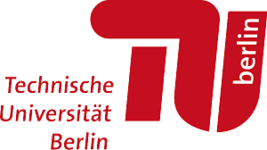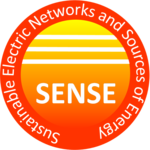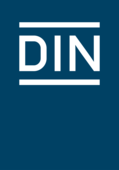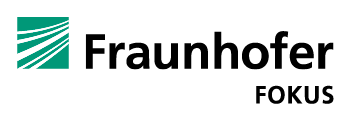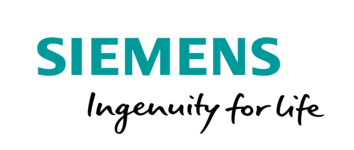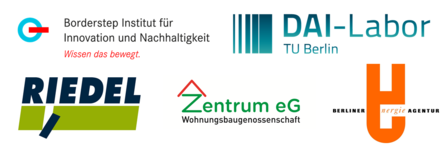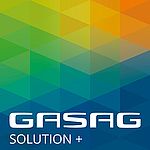WindNODE was a project comprised of more than 70 partners that were collaborating on 50 subprojects. Each individually, they contributed to solving the challenge: integrating renewable energy sources into our energy system. To understand the project's full scope, it is crucial to examine WindNODE's parts in detail.
Each of our "WindNODE spotlight" stories provides you with a tangible impression of one of our subprojects. Which research questions were asked, and how did we plan to answer them? Who are the people behind the solutions and how ido they contribute to WindNODE and our overall mission: advancing the energy transition?
"Machine builders want to become climate-neutral"
At the Fraunhofer Institute for Machine Tools and Forming Technology (Fraunhofer IWU) in Chemnitz, researchers have added energy optimization to digital production planning. This means that it is now possible to control production technology, the company's own renewable energy plants and storage facilities, even according to prices on the electricity exchange. This active energy management is a prerequisite for the climate-neutral factory of the future.
Real-time Lab of the Energy Transition
For the interactive experience of a climate-friendly power system operation from the low to the extra-high voltage levels, researchers of the Department for Sustainable Electric Networks and Sources of Energy (SENSE) of TU Berlin created a novel laboratory platform. This system is ready to provide students a first-hand insight into today’s and tomorrow’s grid operation, and it facilitates research into the grid operation of the future.
A common language for the energy system of the future
New developments are driving forward change in the energy system. The innovations create new processes, interfaces and routines. However, too much diversity would mean that the parts could no longer communicate with each other. That is why the Deutsches Institut für Normung (German Institute for Standardisation, DIN) has created three DIN specifications (DIN SPECs) as part of WindNODE. They are the first step towards a common language for the digitalised, renewable energy industry of the future.
The “yellow pages” of the energy transition
The researchers of the Fraunhofer Institute for Open Communication Systems (FOKUS) have developed an online platform for energy data and energy services in the scope of a WindNODE workstream. Algorithms will aim to discover new opportunities whilst creating added value from the large amount of energy data and services. In order to allow this vision to become reality, the researchers of the FOKUS Institute developed an online platform for energy data and services. Using blockchain technology, contracts can be made within the platform between the numerous participating partners.
Relieving the pressure on power lines through local electricity consumption
When the wind and sun push too much energy into the power systems, some power lines fall into the 'red zone'. The WindNODE flexibility platform shows how local industrial or storage units can use surplus electricity directly and so relieve the pressure on power lines in a targeted manner.
‘We could heat the entire North-East with wind power’
In the Uckermark region, around 150 kilometres north of Berlin, lies a village which has been heated by wind power since February 2020. What is demonstrated here by this WindNODE project could set the tone for the entire North-East.
‘Controlling industrial load management as a whole’
In its Berlin factories, Siemens is testing how energy-intensive processes can be shifted to times of high renewable electricity supply. This saves electricity costs and helps to better integrate the fluctuating offer from renewable energy sources into the power grid. What is being tested in Berlin can be transferred to all Siemens factories worldwide, as well as be offered to customers.
A Fresh Breeze for Cellars and Grids
For the energy system of tomorrow our daily electricity not only must come from renewable sources, it must also be used smart: Both for customers and the grid. In WindNODE, WEMAG shows in an exemplary manner how wind power can contribute to warm houses and stable electricity grids.
Smart building and Power-to-Heat in the conventional building envelope
Reduced energy consumption and flexible electric heating: the future of the energy transition has already started here, in a city quarter from the 1960s, of all places. Incidentally, the WindNODE project shows how the CO2 targets of the building industry for 2030 can also be achieved at a favourable cost to the consumer.
“No one said it was going to be easy!”
How do we get society involved in shaping the energy transition? In the WindNODE Challenge, Berlin Partner for Business and Technology is testing ‘serious gaming’ as a social simulation of the energy transition. The participants slip into new roles and experience something entirely unexpected.
The operating system of the energy transition
In the scope of WindNODE, software and hardware developers such as Bosch Software Innovations and devolo are developing and testing the technology to mobilise thousands of small installations for the energy transition together with system operator Stromnetz Berlin. This will form the digital backbone for the power grid of the future.
Pattern detection instead of weather forecasts
Digital meters provide more and more real-time data about the generation by wind turbines and PV. They help to make the power grid fit for the energy transition. Solandeo uses these data for faster and cheaper forecasts with a higher geographic resolution of generation from renewables. In doing so, it helps system operators and electricity traders.
Game changer for gas and electricity
Berliner Wasserbetriebe shows how important wastewater treatment plants can be as flexible power suppliers and consumers in all of Germany. WindNODE should now help to further develop the economic and regulatory framework conditions for the use of sewage gas.
Balancing the power grid by generating heat and cold
At the ‘European Energy Forum’ (EUREF), beneath the gasometer in Berlin-Schöneberg, GASAG Solution Plus is testing a Power-to-Heat/Power-to-Cold installation that is unique in Germany as part of WindNODE. Their first learning: demand is greater than anticipated.

